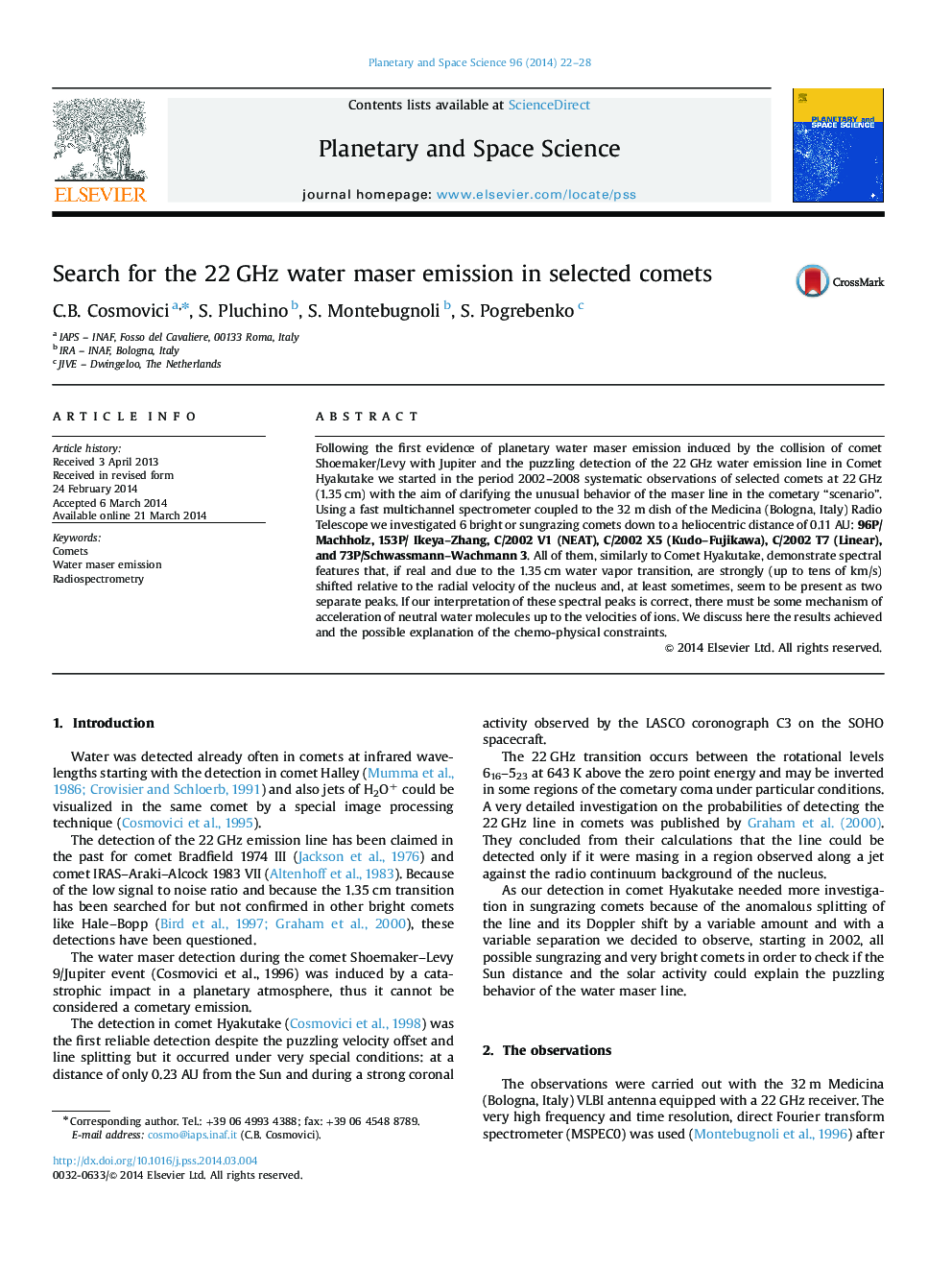| Article ID | Journal | Published Year | Pages | File Type |
|---|---|---|---|---|
| 8143758 | Planetary and Space Science | 2014 | 7 Pages |
Abstract
Following the first evidence of planetary water maser emission induced by the collision of comet Shoemaker/Levy with Jupiter and the puzzling detection of the 22Â GHz water emission line in Comet Hyakutake we started in the period 2002-2008 systematic observations of selected comets at 22Â GHz (1.35Â cm) with the aim of clarifying the unusual behavior of the maser line in the cometary “scenario”. Using a fast multichannel spectrometer coupled to the 32Â m dish of the Medicina (Bologna, Italy) Radio Telescope we investigated 6 bright or sungrazing comets down to a heliocentric distance of 0.11Â AU: 96P/Machholz, 153P/ Ikeya-Zhang, C/2002 V1 (NEAT), C/2002 X5 (Kudo-Fujikawa), C/2002 T7 (Linear), and 73P/Schwassmann-Wachmann 3. All of them, similarly to Comet Hyakutake, demonstrate spectral features that, if real and due to the 1.35Â cm water vapor transition, are strongly (up to tens of km/s) shifted relative to the radial velocity of the nucleus and, at least sometimes, seem to be present as two separate peaks. If our interpretation of these spectral peaks is correct, there must be some mechanism of acceleration of neutral water molecules up to the velocities of ions. We discuss here the results achieved and the possible explanation of the chemo-physical constraints.
Keywords
Related Topics
Physical Sciences and Engineering
Earth and Planetary Sciences
Geophysics
Authors
C.B. Cosmovici, S. Pluchino, S. Montebugnoli, S. Pogrebenko,
